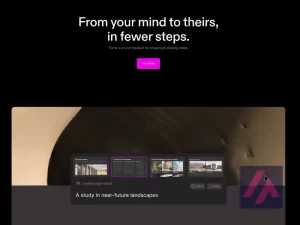How is artificial intelligence applied in education?
Artificial intelligence (AI) in education is applied by employing AI systems in the teaching and learning process. This includes the use of chatbots, virtual assistants and other AI tools to provide information and support to students and to assess student progress and performance.
Benefits of artificial intelligence in education
Personalized attention
One of the main benefits of AI in education is the ability to provide personalized attention to individual students. AI systems can assess students’ progress and performance and provide material and exercises specific to their individual level and needs. This can help students learn at their own pace and make the most of their study time.
Accessibility
Another advantage of AI in education is accessibility. AI systems can provide information and support to any student, anywhere, at any time. This is especially important for students with disabilities or those living in remote areas or without access to traditional education. AI systems can also provide translations and adapted materials for students who do not speak the language of instruction.
Efficiency
AI can also increase efficiency in education. AI systems can assess student progress and performance quickly and accurately, allowing teachers to spend more time on teaching and less on remediation and assessment. In addition, AI can also provide teachers with an overview of the progress and performance of all students in a class, allowing them to adapt their teaching and provide support to those who need it. This can lead to greater efficiency and better use of study time.
Challenges and concerns of artificial intelligence in the educational field
Displacement of teachers
One of the main concerns with the use of AI in education is the potential displacement of teachers. Many people fear that AI will replace teachers and reduce the need for teaching staff. However, it is important to keep in mind that AI cannot completely replace teachers and that human guidance and teaching is still needed to ensure effective learning. Rather than replacing teachers, AI can be used as a tool to support and complement human teaching.
Educational inequalities
Another concern with the use of AI in education is the potential creation or widening of educational inequalities. If only some students have access to high-quality AI systems, this may lead to a gap in knowledge and learning among students. It is important to ensure that all students have access to the same quality of AI materials and tools to avoid this gap.
Privacy and security
Privacy and security are other major concerns with the use of AI in education. As more students and teachers use AI systems, it is important to ensure that their data is protected and that privacy standards are met. In addition, it is important to consider the security of AI systems and ensure that they cannot be hacked or misused.
Conclusion
In summary, AI in education can provide personalized attention, accessibility, and efficiency, but it also raises challenges and concerns about teacher displacement, educational inequities, and privacy and security. As AI is increasingly used in the educational setting, it is important to consider both its benefits and its potential challenges and concerns to ensure effective and fair learning for all students.













0 Comments